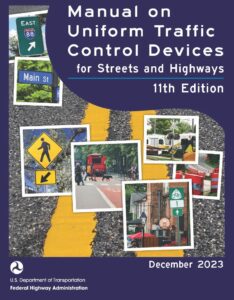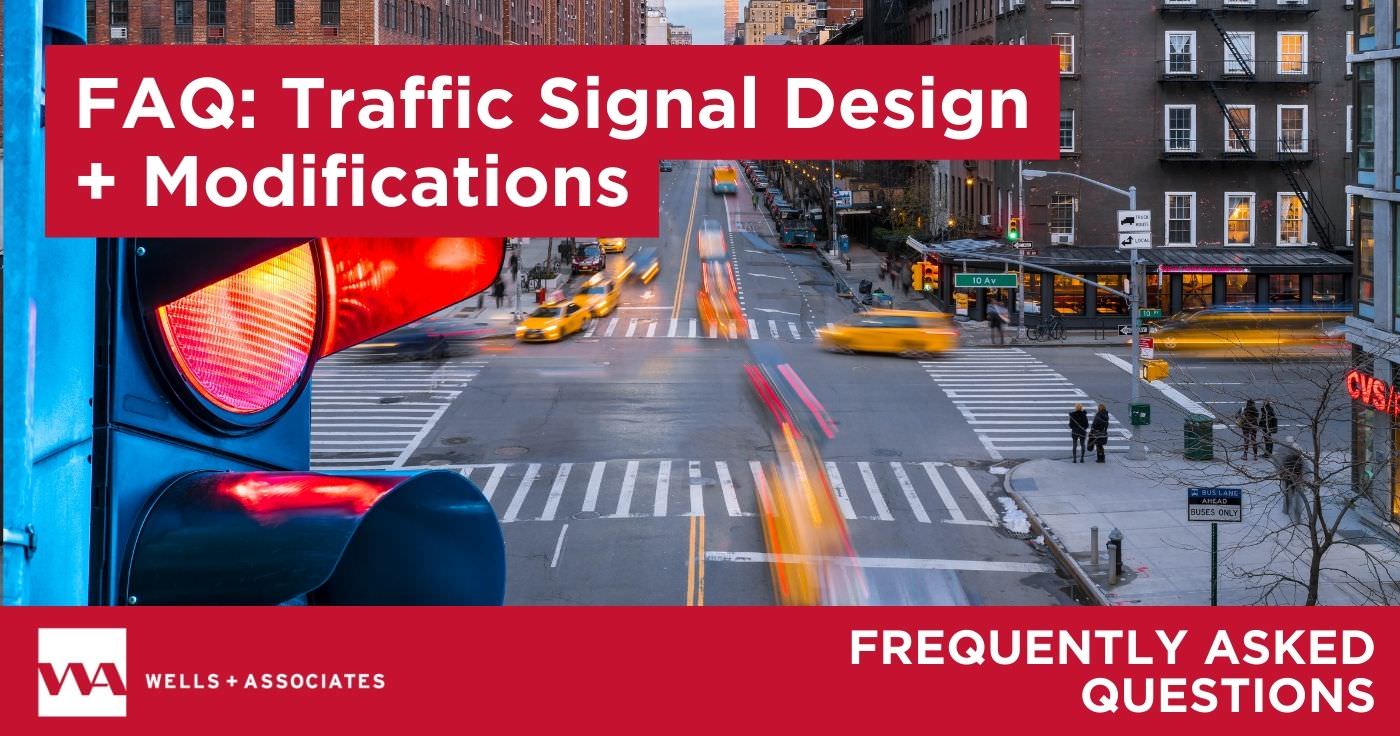Traffic signal design and modification can play an integral role in traffic engineering and real estate development. The design of traffic signals helps ensure the smooth and efficient flow of vehicular, pedestrian, and bicycle traffic at intersections and along roadway corridors while minimizing congestion and crashes.
Q: What factors determine whether a traffic signal is needed at an intersection?
A variety of factors come into play when determining whether a traffic signal is required or needed at an intersection. Among the major factors are traffic volumes, pedestrian activity, accident history, sight distance, side-street delay, and level of service.
Q: What guidelines are used for traffic signal design?
 Around the country, jurisdictions such as states, counties, and towns have their own set of standards and guidelines that are based on the Manual on Uniform Traffic Control Devices (MUTCD).
Around the country, jurisdictions such as states, counties, and towns have their own set of standards and guidelines that are based on the Manual on Uniform Traffic Control Devices (MUTCD).
Published by the Federal Highway Administration, the MUTCD establishes uniform national criteria for the use of traffic control devices that meet the needs and expectancy of road users on streets, highways, and pedestrian and bicycle paths. Other key considerations include intersection geometry, traffic volumes, ADA accessibility, and signal timing parameters.
Q: How long does it take to install or modify a traffic signal?
Typically, it takes about 1 to 3 months to install or modify a traffic signal, assuming funding is in place, proper permits are secured, a design has been approved, and signal poles and other equipment are readily available. The study, design, and permitting beforehand can typically take anywhere from 4 months to over a year depending on the scope of work involved.
Q: What happens during a traffic signal study? What is the process?
During a traffic signal study, traffic engineers perform vehicular and pedestrian traffic turning movement counts for 12 to 13 hours, analyze traffic delays, review safety records, and then evaluate that information against the 9 signal warrants found in the MUTCD.
What factors play a role in pedestrian crossing signals, including their timing?
The design of pedestrian crossing signals depends on a variety of factors, including average walking speeds, number and frequency of pedestrians crossing, distance, and accessibility needs.
Q: Are bike signals required at all intersections where bike lanes are present?
Bicycle signals are generally not required at all intersections where bike lanes are present, but bike signals are encouraged in high-traffic areas or where bicycle-vehicle conflicts exist.
Q: Who is responsible for traffic signal design and modifications?
Responsibility for traffic signal design varies depending on the jurisdiction and can range from local municipalities, state Departments of Transportation (DOTs), and traffic engineers, and on occasion real estate developers.
Q: How are vehicles, pedestrians, and bicycles detected at traffic signals?
Detection methods vary depending on the technology and intersection design. Vehicles are most commonly detected using inductive loop sensors embedded in the pavement, video cameras, microwave devices, or radar units. Pedestrians are typically detected by push buttons located at crosswalks, though some systems use automated pedestrian detection with infrared or video sensors. Bicycle detection can use specialized loop sensors tuned to detect bikes, push buttons located near bike lanes, or video detection systems designed to identify cyclists specifically.
What Is a Traffic Signal Warrant?
In this video we explain the process for establishing the minimum criteria for evaluating the need for a traffic signal at a specific intersection, and installing a traffic signal in communities, new developments, towns, and cities.

